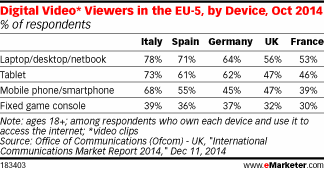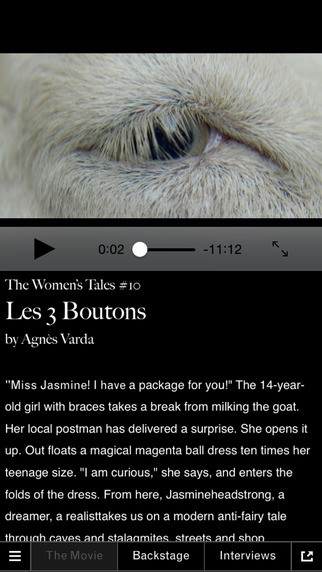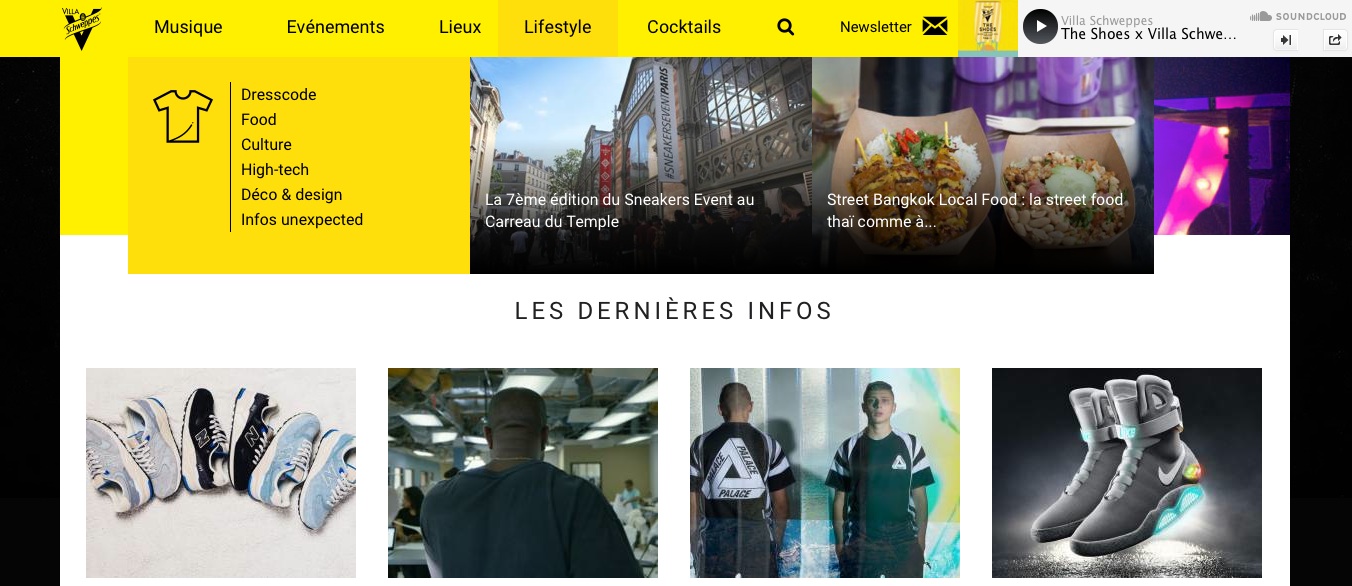B2C
5 Content Marketing Trends Sweeping Europe
Making products and services more accessible to widespread and valuable audiences is the ultimate goal for brands all over the world. And in Europe, they’re succeeding more and more—thanks, in large part, to content marketing. About 71 percent of European marketers created more content in 2015 than they did the year prior. In Finland, 80 percent of marketers use original content to target their customers; in Denmark, that number raises to 86 percent.
While output levels are high, so, too, is quality. Brands are pushing the envelope by experimenting with new formats and finding fresh ways to leverage the tried-and-true tactics they’ve used in the past.
Here, we look at the latest European marketing trends to examine how top brands are consistently creating world-class content marketing campaigns.
Mobile video
With more than 1 billion active mobile subscriptions in Europe, video consumption on smartphones and tablets has been steadily rising, and European audiences are among those devoting more time to mobile video. In Austria, 34 percent of consumers said they watch more mobile video now than they did a year ago. In Italy, that figure was 35 percent; in Sweden, 36; and in Denmark and Finland, 39 percent.
Other studies show that smartphones and tablets are gaining on desktops. It’s a neck-and-neck race between tablets and desktops in Germany, while nearly as many Italian consumers choose to watch videos on their tablets as on a desktop computer.

As a result of this evolution, marketers across Europe are shoring up their mobile video investments. For example, since 2013, Philips has been running a digital campaign to promote its Click & Style shaving toolkit that uses mobile interactive video to let potential customers experiment with shaving. Created by Ogilvy & Mather Düsseldorf—and using video technology from Rapt Media—the campaign, available in four languages, was touted as “the world’s first fully mobile-enabled interactive video experience.”
“Designed to Play” produced some impressive results: The average viewing time of the mobile video surpassed four minutes, and consumers engaged with the media an average of three to four times.
As Lenze Boonstra, head of the global marketing team for Philips Personal Care put it, “Given the fact that we are the first ones to launch a mobile-enabled campaign like this, I think we have delivered something promising.”

Social media-exclusive content
Brands are quickly realizing the importance of providing their social media followers with original media assets. Let’s look again at Adidas. For six months prior to its 2014 FIFA World Cup campaign, the German athletic brand and its social media agency, We Are Social, collected photos and footage of Adidas-sponsored soccer players.
This exclusive content was pushed out for the brand’s “#allin or nothing” social campaign. With 1,000 images and 160 videos at its disposal, Adidas doubled its YouTube audience, attracted over a million new fans on Facebook, and generated 2.1 million mentions on Twitter—more than any other FIFA World Cup sponsor.
Ready to rumble. #allin or nothing #WorldCup pic.twitter.com/Jtnp0zIgch
— adidas Football (@adidasfootball) June 14, 2014
“The work Adidas did during the 2014 World Cup was outstanding in terms of content planning at scale,” Della Dora said. “It created thousands of pieces of content in order to be able to react to every single crucial moment of the competition in real time on social. It was a huge success and created a real relationship between a soccer ball and the soccer enthusiasts.”
Adidas has said that it achieved record soccer-related sales amounting to 2 billion euros as a result of the campaign. Eight million jerseys and 14 million soccer balls in the Brazuca design were sold. That’s 1 million more balls than Adidas sold in 2010.
In addition to more than 1.5 million social conversations, Adidas received 5.8 million new followers across all social platforms and 917,000 #allin hashtag mentions on Twitter. And the @brazuca Twitter account grew by 603 percent, generating over 530,000 user interactions.
Brand series
Longform video, specifically the concept of the brand series, is a rapidly emerging format among marketers, who promote everything from blouses to beer with collections of high-quality videos that embody the spirit and lifestyle associated with their brands. Since 2012, Prada’s women’s-only Miu Miu label has been enlisting female filmmakers to help craft its feminine films, which together are known as The Miu Miu Women’s Tales. In addition to being available online, the short films are routinely screened at the Venice Film Festival. In keeping with the mobile video trend, they can also be viewed by way of a project-specific app.

Perrier’s five-part brand series, called Tales of the District, uses animation, narration, and its distinctive shade of green to tell the story of a man who is besotted by the hostess of fictional locale District Perrier, which followers can find on Tumblr.
Dutch brewing company Heineken, meanwhile, earned itself more than 6.5 million views for The Experiment, a three-minute original video that’s part of the ongoing global project “Enjoy Heineken Responsibly,” designed to encourage drinking in moderation. Launched in 2014 with the slogan “Dance More, Drink Slow,” the campaign has been promoted in more than 20 countries and demonstrates how a great DJ can decrease the amount that party-goers drink. Additional video content, like a behind-the-scenes look at DJ Armin van Buuren and a video offering even more insight into “the experiment,” creates an in-depth brand experience.
Inspirational storytelling
Video may be popular, but don’t let it detract from the value of longform written content. French mountaineering equipment brand Quechua uses it on its blog, Hiking on the Moon, where readers can find inspirational adventure stories of mountain-loving customers like photographer Théo Giacometti through episodic posts. With the help of articles in both English and French, photography, maps, and video, the audience can follow him through Norway’s Hardangervidda National Park, where reindeer run wild.
The Swiss beverage brand Schweeps has also covered immersive territory with the digital culture and lifestyle magazine Villa Schweppes, which features articles on music festivals, Parisian bars, and fashion trends along with cocktail recipes. DJs, designers, and mixologists designed to inspire readers to adopt the brand’s hip nightlife vibe.

Widespread influencer marketing
Last year, a Dutch startup called Influencers at Work launched Europe’s first fully automated influencer marketing service, and already, we’re starting to see major brands including Lancôme Italy and Beck’s Brewery embrace influencer campaigns.
To promote its Hypnôse Volume-à-Porter mascara, Lancôme recently partnered with social media influencers and bloggers to create a series of Facebook and Instagram videos. The campaign reportedly reached more than 5 million users and saw engagement rates as high as 2.5 percent. For Beck’s, influencers helped the beer brand promote a consumer contest with 30 social media posts, which reached 6.8 million consumers and generated 170,000 social interactions.
This is an excerpt from the e-book “State of Content Marketing: Europe.”
Get better at your job right now.
Read our monthly newsletter to master content marketing. It’s made for marketers, creators, and everyone in between.




